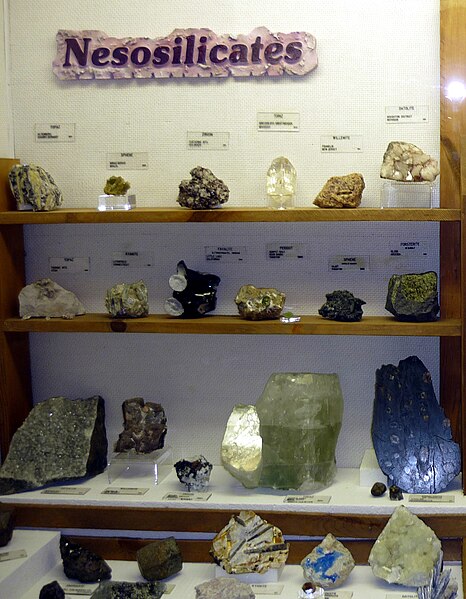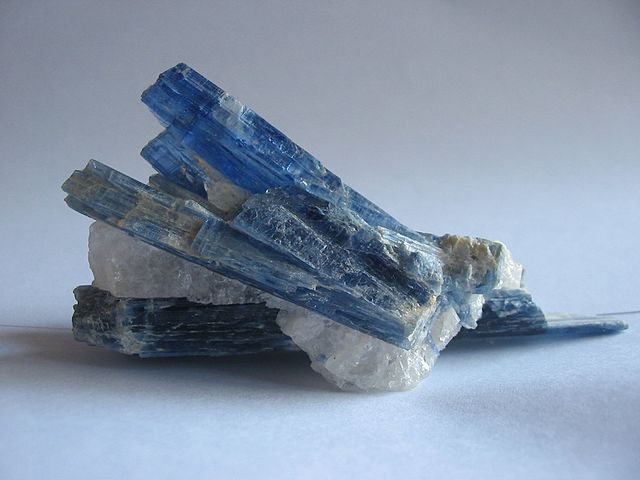Amphibole is a group of inosilicate minerals, forming prism or needlelike crystals, composed of double chain SiO4 tetrahedra, linked at the vertices and generally containing ions of iron and/or magnesium in their structures. Its IMA symbol is Amp. Amphiboles can be green, black, colorless, white, yellow, blue, or brown. The International Mineralogical Association currently classifies amphiboles as a mineral supergroup, within which are two groups and several subgroups.
Amphibole (tremolite)
Photomicrographs of a thin section containing an amphibole crystal; under cross-polarized light on the left, and plane-polarized light on the right.
Double-chain inosilicate structure looking up the [100] axis. Silicon ions are hidden by apical oxygen ions.
Side view (along [010]) of double chain inosilicate backbone. Apical oxygens are at the bottom.
Silicate minerals are rock-forming minerals made up of silicate groups. They are the largest and most important class of minerals and make up approximately 90 percent of Earth's crust.
Lithium aluminium silicate mineral spodumene
Diatomaceous earth, a biogenic form of silica as viewed under a microscope. The imaged region measures approximately 1.13 by 0.69 mm.
Nesosilicate specimens at the Museum of Geology in South Dakota
Kyanite crystals (unknown scale)



![Double-chain inosilicate structure looking up the [100] axis. Silicon ions are hidden by apical oxygen ions.](https://upload.wikimedia.org/wikipedia/commons/thumb/d/d5/Amphibole_100.jpg/557px-Amphibole_100.jpg)
![Side view (along [010]) of double chain inosilicate backbone. Apical oxygens are at the bottom.](https://upload.wikimedia.org/wikipedia/commons/thumb/b/b7/Amphibole_010.jpg/640px-Amphibole_010.jpg)



